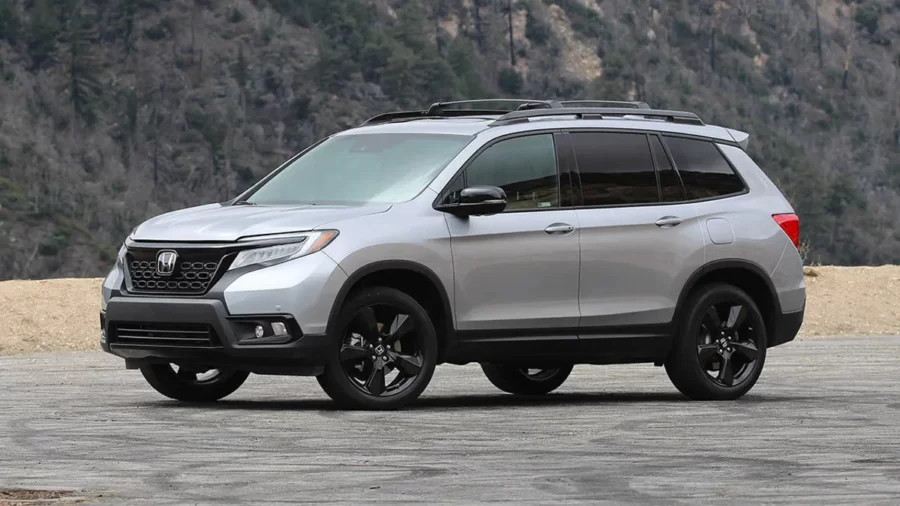Introduction to the Honda Passport
The Honda Passport, a versatile and reliable SUV, has been a popular choice among car enthusiasts since its introduction in 1993. With its sleek design, spacious interior, and impressive performance, the Passport has become a go-to vehicle for both urban and off-road adventures.
Why Wheel Nut Torque Matters
- Ensuring Safety: Proper wheel nut torque is crucial for maintaining the safety of your Honda Passport. When the lug nuts are not tightened to the correct torque specification, it can lead to wheel loosening or even detachment while driving, posing a significant risk to you and others on the road.
- Preventing Damage: Over-tightening or under-tightening the lug nuts can cause damage to the wheel studs, wheel hub, and brake components. This can result in costly repairs and compromise the overall performance and longevity of your vehicle.
- Optimizing Performance: The correct wheel nut torque helps distribute the load evenly across the wheel assembly, ensuring proper alignment and balance. This, in turn, enhances the handling, stability, and fuel efficiency of your Honda Passport.
- Manufacturer’s Recommendation: Honda provides specific torque specifications for the lug nuts of the Passport to ensure optimal performance and safety. Following these guidelines is essential to maintain the warranty and preserve the integrity of your vehicle.
In this article, we will delve into the lug nut size and torque specifications for the Honda Passport, providing you with the necessary information to keep your wheels secure and your driving experience smooth and worry-free. So, let’s dive in and explore the world of lug nut torque for your beloved Honda Passport!
Lug Nut Sizes for Honda Passport
When it comes to the lug nut sizes for the Honda Passport, it’s important to consider the variations based on different trims, engines, and generations. Let’s take a closer look at the lug nut sizes for each specific category:
Lug Nut Sizes for Different Trims and Engines
| Trim Level | Engine | Lug Nut Size |
|---|---|---|
| Sport | 3.5L V6 | 12mm x 1.5 |
| EX-L | 3.5L V6 | 12mm x 1.5 |
| Touring | 3.5L V6 | 12mm x 1.5 |
| Elite | 3.5L V6 | 12mm x 1.5 |
Lug Nut Sizes for Different Generations
| Year | Lug Nut Size |
|---|---|
| 1993-1997 | 12mm x 1.5 |
| 1998-2002 | 12mm x 1.5 |
| 2019-2021 | 12mm x 1.5 |
| 2022-Present | 12mm x 1.5 |
It’s important to note that the lug nut size for the Honda Passport has remained consistent over the years, with a 12mm x 1.5 specification. This ensures compatibility and ease of maintenance when it comes to changing or replacing lug nuts.
Now that we have covered the lug nut sizes, let’s move on to the torque specifications for these lug nuts in the next section.

Wheel Nut Torque Specifications for Honda Passport
When it comes to wheel nut torque, it is crucial to follow the manufacturer’s specifications to ensure the safety and performance of your Honda Passport. Here is a detailed chart showcasing the recommended torque values for the front and rear wheel lug nuts for different trim levels and years:
Front Wheel Nut Torque Specifications
| Trim Level | Year | Front Wheel Nut Torque (ft/lbs) | Front Wheel Nut Torque (Nm) |
|---|---|---|---|
| Sport | 2019-2021 | 80 | 108 |
| EX-L | 2019-2021 | 80 | 108 |
| Touring | 2019-2021 | 80 | 108 |
| Elite | 2019-2021 | 80 | 108 |
Rear Wheel Nut Torque Specifications
| Trim Level | Year | Rear Wheel Nut Torque (ft/lbs) | Rear Wheel Nut Torque (Nm) |
|---|---|---|---|
| Sport | 2019-2021 | 80 | 108 |
| EX-L | 2019-2021 | 80 | 108 |
| Touring | 2019-2021 | 80 | 108 |
| Elite | 2019-2021 | 80 | 108 |
Practical Recommendations for Lug Nut Maintenance
1. Follow Manufacturer’s Specifications
Always refer to the Honda Passport owner’s manual or contact your local Honda dealership to ensure you are using the correct lug nut size and torque specifications for your specific trim level and year. Following the manufacturer’s recommendations will help maintain the safety and integrity of your vehicle.
2. Use a Torque Wrench
Invest in a reliable torque wrench to accurately tighten the lug nuts to the recommended torque values. This will prevent over-tightening or under-tightening, ensuring proper wheel attachment and minimizing the risk of damage or accidents.
3. Regularly Inspect Lug Nuts
Periodically inspect the lug nuts for any signs of wear, corrosion, or damage. If you notice any issues, replace the lug nuts promptly to maintain the structural integrity of the wheels.
4. Retorque After Wheel Removal
Whenever you remove and reinstall a wheel, it is essential to retorque the lug nuts after a short drive. This helps to compensate for any settling or loosening that may occur during initial use.
5. Seek Professional Assistance
If you are unsure about lug nut maintenance or lack the necessary tools, it is recommended to seek professional assistance from a certified mechanic or visit your local Honda service center. They have the expertise and equipment to ensure proper lug nut installation and torque.
By following these practical recommendations, you can ensure the safety, performance, and longevity of your Honda Passport’s wheels. Remember, proper lug nut size and torque specifications are vital for a smooth and worry-free driving experience.
